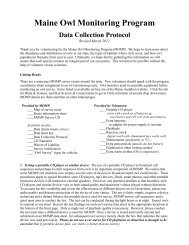Focus Species Forestry - Maine Audubon
Focus Species Forestry - Maine Audubon
Focus Species Forestry - Maine Audubon
You also want an ePaper? Increase the reach of your titles
YUMPU automatically turns print PDFs into web optimized ePapers that Google loves.
Pine Warbler<br />
Distribution: Southern Ontario and southwest Quebec, south to<br />
Texas and Florida<br />
<strong>Maine</strong> <strong>Focus</strong> Region: Statewide<br />
Territory: 1-3 acres, possibly larger with low pine density<br />
Food: Adult and insect larvae, spiders<br />
Special Habitat Needs: Stands with relatively mature to mature<br />
white pine or pitch pine<br />
Management:<br />
Manage for intermediate or mature white pine or pitch pine in<br />
pure or mixed stands as a component of the forest.<br />
Comments: The irregular trill of the pine warbler may be heard high<br />
in the canopy during the spring breeding season from late April<br />
through July. The only vertebrate in our region that is dependent on pines, pine warbler density declines as the<br />
percent of hardwood increases in the canopy or the understory. White pines also make good roost trees for wild<br />
turkeys in oak-pine forests. Long-eared and northern saw-whet owls, red-breasted nuthatch, hermit thrush, solitary<br />
vireo and red squirrel may also be found in stands where pine warblers are present.<br />
Habitat Use:<br />
Aspen -Birch<br />
Forest Ecosystems<br />
Northern<br />
Hardwoods Oak-Pine Hemlock Spruce-Fir<br />
N. White<br />
Cedar<br />
R S I M R S I M L R S I M L I M L R S I M L I M L M,L<br />
WP WP WP WP WP WP WP WP WP<br />
Special-value<br />
Habitats<br />
Riparian/<br />
Wetland Vernal<br />
Forest Pool<br />
R Regeneration and seedlings Mx Mixed conifer-deciduous <strong>Focus</strong> habitat<br />
S Saplings and small poles WP White pine required Other habitat<br />
I Intermediate-aged forest U Understory present Little/no use<br />
M Mature forest C Cavity tree or snag<br />
L Late-successional forest<br />
References: Boone and Krohn 1998, DeGraaf and Yamasaki 2001, Hagan et al. 1997, Sauer et al. 2003, Sibley<br />
2000, Terres 1991, http://www.natureserve.org/explorer/<br />
<strong>Focus</strong> <strong>Species</strong> <strong>Forestry</strong> 51



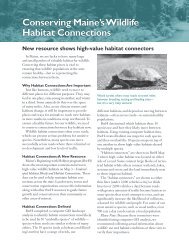
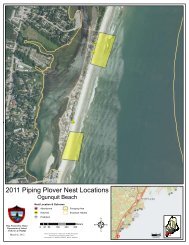
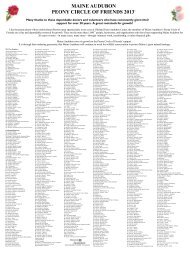
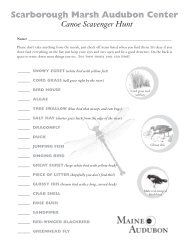

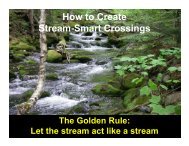
![2012 Loon Count Results [pdf] - Maine Audubon](https://img.yumpu.com/26228732/1/190x245/2012-loon-count-results-pdf-maine-audubon.jpg?quality=85)
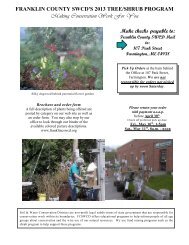
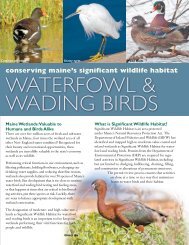
![Lake Fish of Maine (DIFW list) [pdf] - Maine Audubon](https://img.yumpu.com/23282964/1/190x245/lake-fish-of-maine-difw-list-pdf-maine-audubon.jpg?quality=85)
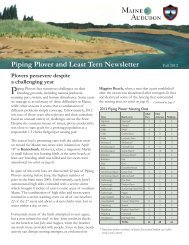

![The Maine Audubon Peony Circle of Friends 2012 [pdf]](https://img.yumpu.com/22707677/1/190x253/the-maine-audubon-peony-circle-of-friends-2012-pdf.jpg?quality=85)
